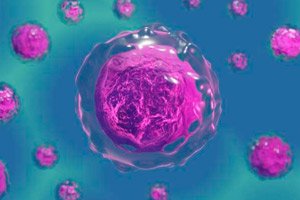
All iLive content is medically reviewed or fact checked to ensure as much factual accuracy as possible.
We have strict sourcing guidelines and only link to reputable media sites, academic research institutions and, whenever possible, medically peer reviewed studies. Note that the numbers in parentheses ([1], [2], etc.) are clickable links to these studies.
If you feel that any of our content is inaccurate, out-of-date, or otherwise questionable, please select it and press Ctrl + Enter.
Scientists have created a system of "biological artificial intelligence"
Last reviewed: 15.07.2025

Australian scientists have successfully developed a research system that uses “biological artificial intelligence” to design and evolve molecules with new or improved functions directly in mammalian cells. The researchers said the system represents a powerful new tool that could help scientists develop more specific and effective research drugs or gene therapies.
The system, called PROTEUS (PROTein Evolution Using Selection), uses a method called “directed evolution,” a laboratory technique that mimics the natural force of evolution. But instead of taking years or decades, it speeds up the cycles of evolution and natural selection, creating molecules with new functions in just a few weeks.
This could have a direct impact on the search for new, more effective drugs. For example, the system could be used to improve gene editing technologies such as CRISPR to make them more effective.
“This means PROTEUS can be used to generate new molecules that are optimised to work in our bodies, and we can create new drugs that would be difficult or impossible to create using current technology,” says study co-author Professor Greg Neely, head of the Dr John and Anne Chong Functional Genomics Laboratory at the University of Sydney.
"The novelty of our work is that directed evolution mainly works in bacterial cells, whereas PROTEUS can evolve molecules in mammalian cells."
The PROTEUS system can solve problems with an uncertain solution - similar to how a user enters queries into an artificial intelligence platform. For example, the problem may be how to effectively "switch off" a disease gene in a person's body.
PROTEUS then uses directed evolution to explore millions of possible sequences that don’t yet exist in nature, and finds molecules with properties that are highly tailored to the problem. This means PROTEUS can find solutions that would take a human researcher years to find — if they could find them at all.
The scientists reported that with the help of PROTEUS, they developed improved versions of proteins that are easier to regulate with drugs, as well as nanobodies (mini-versions of antibodies) that can detect DNA damage, an important process that contributes to the development of cancer. However, as the authors emphasized, the application of PROTEUS is not limited to this: it can be used to improve the function of most proteins and molecules.
The results are published in Nature Communications. The research was carried out at the Charles Perkins Centre at the University of Sydney in collaboration with researchers from the Centenary Institute.
The discovery of molecular machine learning
The original development of the directed evolution method, first implemented in bacteria, was awarded the Nobel Prize in Chemistry in 2018.
“The invention of directed evolution changed the course of biochemistry. Now, with PROTEUS, we can program a mammalian cell to solve a genetic problem for which we have no ready answer. If we let the system run continuously, we can monitor how it solves the problem on a regular basis,” said lead researcher Dr Christopher Denes, from the Charles Perkins Centre and the School of Life and Environmental Sciences.
The main challenge that Denes and his team faced was how to make a mammalian cell resilient to multiple cycles of evolution and mutations while maintaining its stability and preventing the system from “cheating” by finding trivial solutions that do not meet the task at hand.
The scientists found a solution in using chimeric virus-like particles, a design consisting of the outer shell of one virus and the genes of another. This design prevented the system from “cheating.”
The design combined elements of two very different families of viruses, creating the “best of both worlds.” The resulting system allowed cells to process many different possible solutions in parallel, with improved solutions becoming dominant and incorrect ones disappearing.
“PROTEUS is stable, robust and has been validated in independent laboratories. We encourage other research groups to use this method. By using PROTEUS, we hope to stimulate the development of a new generation of enzymes, molecular tools and therapeutics,” said Dr. Denes.
“We have made this system open to the research community and are looking forward to seeing how it is used. Our goal is to improve gene editing technologies and refine mRNA drugs for more potent and specific effects,” added Professor Neely.
